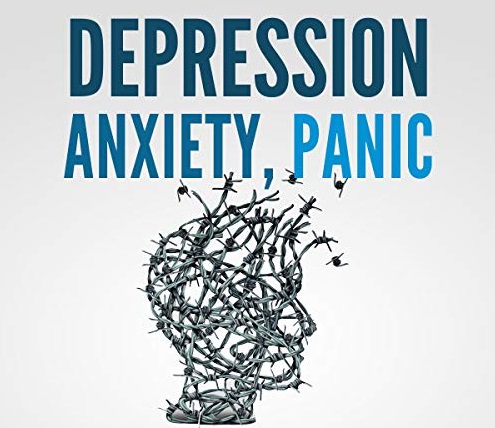
Strengthening Resilience: Several effective strategies to protect your mental health from the many downsides of anxiety disorder
Anxiety is a natural reaction to stress, but when it becomes persistent or overwhelming, it can take a toll on both mental and physical health. Strengthening resilience is key to managing anxiety and fostering a healthy, balanced mind. Resilience doesn’t mean avoiding stress—it’s about developing the ability to adapt and bounce back from life’s challenges.
This article explores several effective strategies to build resilience and protect mental well-being from the effects of anxiety disorder. Keep in mind that not every approach will work for everyone, but by gaining insight and understanding, you may discover techniques that suit you best. Let’s explore them one by one.
1. Develop a Growth Mindset
A growth mindset is the belief that abilities and intelligence can be developed through dedication and hard work. Viewing challenges as opportunities to grow rather than threats can shift your perspective and reduce anxiety. Embrace setbacks as learning experiences, and remind yourself that difficulties are temporary and surmountable.
2. Practice Mindfulness and Meditation
Mindfulness involves focusing on the present moment without judgment. Regular mindfulness practice can help reduce anxiety by shifting attention away from distressing thoughts and fostering a sense of calm. Meditation, deep breathing, and body scanning techniques can further support emotional regulation and stress management.
3. Prioritize Self-Care
Taking care of your body and mind is crucial in strengthening resilience. Ensure you get adequate sleep, maintain a balanced diet, and engage in regular physical activity. Exercise, in particular, has been shown to reduce anxiety by releasing endorphins and improving mood. Additionally, engaging in activities that bring joy and relaxation, such as hobbies or spending time in nature, can contribute to overall mental well-being.
4. Build a Strong Support System
Having supportive relationships can significantly buffer the effects of anxiety. Surround yourself with positive and understanding individuals who encourage resilience. Whether through family, friends, support groups, or therapy, meaningful connections provide comfort and guidance during stressful times.
5. Cultivate Emotional Regulation Skills
Managing emotions effectively can prevent anxiety from escalating. Techniques such as journaling, cognitive reframing, and engaging in creative outlets like art or music can help process emotions in a healthy way. Identifying triggers and developing coping mechanisms tailored to your needs can also enhance emotional resilience.
6. Establish Healthy Boundaries
Setting boundaries is essential for maintaining mental health and preventing burnout. Learn to say no to demands that exceed your emotional or physical capacity. Prioritize activities that align with your well-being, and avoid situations or individuals that contribute to unnecessary stress.
7. Develop Problem-Solving Skills
Resilience involves facing problems head-on rather than avoiding them. Strengthen your problem-solving skills by breaking challenges into manageable steps. Identify possible solutions, weigh their pros and cons, and take action. Feeling in control of situations can reduce anxiety and enhance confidence in handling future stressors.
8. Seek Professional Help When Needed
There is no shame in seeking professional support when anxiety becomes overwhelming. Therapy, counseling, or psychiatric intervention can provide tailored strategies and coping mechanisms. Cognitive-behavioral therapy (CBT), in particular, has proven effective in reducing anxiety symptoms and improving resilience.
Building resilience against anxiety disorder requires consistent effort and self-awareness. By fostering a growth mindset, practicing mindfulness, prioritizing self-care, and seeking support, you can strengthen your mental health and navigate life’s challenges with confidence. Remember, resilience is not about eliminating stress but about developing the capacity to adapt, recover, and thrive


The many ugly outcome of generational trauma: Effective strategies on how to reclaim full control of your thoughts after dealing with any sorts of trauma. Secrets revealed.
Generational trauma, also referred to as intergenerational or transgenerational trauma, is a deeply rooted phenomenon that manifests as the lingering psychological effects of a traumatic event passed down from one generation to the next. This trauma doesn’t just affect individuals—it ripples through entire families and communities, shaping behaviors, relationships, and mental health outcomes. From substance abuse and anxiety disorders to unhealthy relationship patterns and self-destructive tendencies, the outcomes of generational trauma can be devastating. But there is hope. With effective strategies, you can reclaim control of your thoughts and heal from the impact of trauma.
Understanding Generational Trauma: What It Is and How It Shapes Us
Generational trauma stems from unresolved pain or distress experienced by ancestors. Examples include surviving genocide, systemic racism, war, abuse, or poverty. While the initial trauma occurs in the past, its effects are transmitted through parenting styles, family dynamics, and even epigenetic changes—alterations in how genes are expressed.
The outcomes of generational trauma include:
- Emotional Dysregulation: Difficulty managing emotions, leading to anger outbursts, anxiety, or depression.
- Trust Issues: Fear of vulnerability, often causing relationship problems or isolation.
- Low Self-Worth: Feelings of inadequacy rooted in inherited beliefs.
- Self-Sabotaging Behaviors: Engaging in actions that hinder personal growth, often subconsciously.
- Perpetuation of Abuse: Normalization of harmful behaviors, passed down as learned coping mechanisms.
These patterns are often unconscious, making them difficult to identify without self-awareness and intentional work.
Reclaiming Control of Your Thoughts After Trauma
Healing from trauma requires a multifaceted approach. Below are effective strategies to help you regain control of your mind and break free from the cycle of generational trauma.
1. Acknowledge the Trauma
- The first step to healing is recognition. Identify the patterns in your family or your own behaviors that might stem from generational trauma. Journaling, reflecting on family stories, or speaking with a therapist can help uncover these links.
- Tip: Explore family narratives with curiosity, not blame. Understanding the origin of trauma can empower you to confront it.
2. Seek Professional Help
- Therapists trained in trauma recovery (such as EMDR practitioners or those using somatic experiencing) can help you process deep-seated pain. Therapy provides a safe space to explore your emotions, unpack inherited patterns, and develop healthier coping mechanisms.
- Support groups can also connect you with others who understand your struggles, fostering shared healing.
3. Practice Mindfulness
- Trauma often hijacks the mind, leading to intrusive thoughts and hypervigilance. Mindfulness techniques like meditation, deep breathing, and body scans help you stay grounded in the present.
- Exercise: Try the “5-4-3-2-1 Technique” to calm racing thoughts by naming five things you can see, four you can touch, three you can hear, two you can smell, and one you can taste.
4. Challenge Negative Beliefs
- Trauma plants seeds of self-doubt and fear. Rewriting your internal dialogue is essential to healing.
- Cognitive Behavioral Therapy (CBT) can help identify and replace negative thought patterns with empowering ones.
- Example Affirmation: “I am worthy of love and respect, regardless of my past or family history.”
5. Set Boundaries
- Breaking the cycle of trauma often requires establishing firm boundaries with toxic individuals. While difficult, this step can protect your mental well-being and pave the way for healthier interactions.
- Tip: Start small. Practice saying “no” or voicing your needs in situations where you feel unsafe or overwhelmed.
6. Reconnect with Your Body
- Trauma often disconnects us from our physical selves. Activities like yoga, tai chi, or dance can restore this connection by releasing tension stored in the body.
- Pro Tip: Journaling alongside body-focused practices can deepen self-awareness by revealing emotional patterns linked to physical sensations.
7. Explore Your Family History with Compassion
- Reframing how you see your ancestors’ struggles can help you break the cycle without resentment. This doesn’t mean excusing harmful behaviors—it means understanding how trauma shaped their actions and resolving to do better.
- Action Step: Create a “family resilience map” that highlights not just the trauma but also the strengths and survival skills passed down.
8. Cultivate Gratitude and Joy
- Trauma narrows focus on pain, but gratitude helps rewire the brain to notice positives. Write down three things you’re grateful for daily. Seek out moments of joy, however small, and let them anchor you in hope.
9. Engage in Creative Outlets
- Expressive activities like painting, writing, or music provide a safe outlet to process emotions. Creative pursuits can help uncover buried feelings and turn pain into purpose.
10. Forgive Yourself and Others
- Forgiveness doesn’t mean condoning harm but releasing its hold on you. Start with self-forgiveness—letting go of guilt or shame tied to inherited patterns.
Secrets to Long-Term Healing
- Break the Silence: Generational trauma often thrives in secrecy. Open conversations within your family, even if uncomfortable, can disrupt the cycle.
- Embrace Resilience: Remember, your ancestors survived unimaginable struggles. Their resilience flows within you, equipping you to break the chains of trauma.
- Focus on Growth: Healing isn’t linear. Celebrate small victories and remain patient with setbacks.
- Pay It Forward: As you heal, share your journey. By breaking the stigma around trauma, you inspire others to embark on their own paths to recovery.
Here are my final Thoughts on this topic: How to reclaim your power
Generational trauma may have shaped your past, but it doesn’t have to define your future. Through acknowledgment, professional help, and intentional healing practices, you can reclaim control of your thoughts and break free from inherited patterns. By confronting and transforming this pain, you not only heal yourself but also create a legacy of hope and resilience for generations to come.
Healing is possible—and it starts with you. Take the first step today.


Some of the many facets of anxiety: Understanding “avoidance behaviors” from those who practice it daily and the ways to work with their anxiety.
Avoidance behavior (A.B) is a common but often misunderstood response to anxiety. It involves evading situations, thoughts, or feelings that trigger discomfort or fear. While avoidance might offer temporary relief, it can reinforce anxiety in the long term, trapping individuals in a cycle of fear and evasion that limits their ability to live fully.
At its core, A.B is a coping mechanism. When confronted with a situation that provokes anxiety, the natural response might be to escape or avoid it. This response is driven by the body’s instinct to protect itself from perceived threats. For example, someone with social anxiety may skip social events (agoraphobia) to avoid the fear of being judged by others, or a person with a specific phobia might avoid environments where they could encounter the object of their fear, such as spiders (arachnaphobia), heights (acrophobia), or people (anthropophobia).
It may provide immediate relief from anxiety, which reinforces the behavior with more intensity and co-dependency. For example, if someone avoids a public speaking event and feels a sense of relief, they are more likely to avoid similar events in the future. Over time, this reinforcement strengthens the avoidance behavior, making it more ingrained and harder to break.
Here are some common types of avoidance behavior:
- Situational Avoidance: This involves avoiding specific situations that cause anxiety, such as flying, driving, or public speaking.
- Cognitive Avoidance: This is the mental act of pushing away distressing thoughts or memories. People might distract themselves or engage in compulsive behaviors to avoid thinking about what troubles them.
- Emotional Avoidance: Individuals may avoid emotions by numbing themselves, using substances, or engaging in other behaviors that prevent them from feeling anxious or sad.
- Social Avoidance: Avoiding social interactions due to fear of judgment, rejection, or embarrassment is another common form of avoidance related to social anxiety.
While avoidance might reduce anxiety in the short term, it has significant long-term consequences. It can lead to:
- Increased Anxiety: Over time, the range of situations that provoke anxiety may widen, making the person more anxious overall.
- Reduced Functioning: Avoidance can interfere with daily life, preventing individuals from pursuing opportunities, forming relationships, or enjoying activities.
- Isolation: Social avoidance, in particular, can lead to loneliness and isolation, further exacerbating mental health issues like depression.
- Dependency: Some individuals might become dependent on safety behaviors or others to help them avoid anxiety-provoking situations, which can limit their independence.
How can we help those dealing with avoidance behavior?
First, it is important to recognize avoidance behavior: Being alert to avoidance behavior is crucial for helping someone manage their anxiety. Some signs to watch for include:
- Frequent Excuses: Someone who frequently avoids certain activities or makes excuses to get out of them might be engaging in avoidance behavior.
- Patterns of Withdrawal: Notice if a person consistently withdraws from situations, conversations, or activities that might trigger anxiety.
- Subtle Changes in Behavior: People might not always outright avoid something; instead, they might engage in subtle behaviors like procrastination or diversion to delay confronting anxiety-inducing situations.
- Non-Verbal Cues: Avoidance can also manifest through body language. A person might seem tense, uncomfortable, or distracted in situations they would rather avoid.
Second, it is to understand some obvious triggers: To effectively identify avoidance behavior, it’s important to understand what triggers the individual’s anxiety. Triggers can be highly specific, such as certain social situations, or more general, such as any situation that feels out of control. By recognizing these triggers, you can better anticipate when someone might engage in avoidance behavior.
Third, have open communication: Encourage open conversations about feelings and behaviors. Sometimes, people might not even be aware that they are avoiding something out of anxiety. Talking about their experiences can help them recognize and address these patterns.
Fourth, pay attention to sudden changes: If someone suddenly changes their routine, stops participating in activities they used to enjoy, or becomes more withdrawn, this might indicate an increase in avoidance behavior due to rising anxiety.
To all therapist out there: Here are some ways to work with those who practice avoidance behavior
1. Building Trust and Providing Support: When working with someone who practices avoidance behavior, establishing trust is essential. They need to feel safe and understood, rather than judged or pressured. Be patient and empathetic, recognizing that their avoidance is a coping mechanism rather than a character flaw.
2. Encouraging Gradual Exposure: Gradual exposure is one of the most effective strategies for overcoming avoidance behavior. It involves slowly and incrementally facing the feared situations, starting with less challenging scenarios and gradually working up to more difficult ones. This process helps to desensitize the individual to the triggers and reduces the intensity of the anxiety response over time.
3. Setting Achievable Goals: Help the individual set small, realistic goals for confronting their avoidance behavior. For example, if someone is avoiding social situations, the first goal might be to attend a small gathering with close friends before moving on to larger events. Celebrate each success, no matter how minor, to build their confidence.
4. Teaching Coping Strategies: Equip the person with coping strategies to manage their anxiety when they begin to face the situations they have been avoiding. These strategies might include:
- Relaxation Techniques: Breathing exercises, progressive muscle relaxation, and mindfulness can help manage the physiological symptoms of anxiety.
- Cognitive Restructuring: Encourage them to challenge the negative thoughts that fuel their anxiety. This involves identifying irrational or exaggerated thoughts and replacing them with more balanced, realistic ones.
- Grounding Techniques: Help them stay present and focused during anxiety-provoking situations through techniques like the 5-4-3-2-1 method (identifying things you can see, touch, hear, smell, and taste).
5. Encouraging a Supportive Environment: Create a supportive environment where the person feels encouraged to face their fears rather than retreat from them. Surrounding them with understanding friends, family, or colleagues can make a significant difference in their ability to confront anxiety.
6. Addressing Safety Behaviors: Safety behaviors are actions people take to feel more secure in anxiety-provoking situations, such as carrying a certain item for comfort or always having an exit strategy. While these behaviors can offer temporary relief, they can also reinforce avoidance. Work with the individual to gradually reduce their reliance on safety behaviors.
7. Encouraging Professional Help: For many people, professional help is necessary to overcome avoidance behavior. Encourage the person to seek therapy, especially Cognitive Behavioral Therapy (CBT), which is particularly effective in addressing avoidance. Therapists can guide them through exposure exercises, cognitive restructuring, and other therapeutic techniques to manage anxiety.
8. Patience and Persistence: Overcoming avoidance behavior is often a long process with setbacks along the way. Be patient and persistent in your support. Understand that progress may be slow and that it’s important to keep encouraging the person to move forward, even when it’s difficult.
9. Reinforcing Positive Change: Whenever the person successfully faces a situation they previously avoided, reinforce this positive change. Acknowledge their courage and the effort it took to confront their fears. This reinforcement can help motivate them to continue tackling their avoidance behavior.
10. Managing Your Own Reactions: When supporting someone with avoidance behavior, it’s important to manage your own reactions. Avoid expressing frustration or impatience, as this can exacerbate the person’s anxiety. Instead, remain calm, supportive, and encouraging.
A.B is a complex and deeply ingrained response to anxiety that can severely limit a person’s life. Recognizing and understanding this behavior is the first step in helping someone move beyond it. Through patience, support, and strategies like gradual exposure and cognitive restructuring, it’s possible to help individuals reduce their reliance on avoidance and reclaim their lives.
Working together, we can guide those who practice avoidance behavior toward greater resilience, confidence, and freedom from anxiety.


Anxiety and dental care: The double-edge sword between optimal oral health and mental trauma

The connection between anxiety and oral care is a widespread phenomenon influenced by various psychological, experiential, and sometimes physiological factors. One significant factor contributing to this association is the fear of pain or discomfort associated with dental procedures. The anticipation of potential pain during cleanings, fillings, or other treatments can trigger anxiety about visiting the dentist.
Negative past experiences at the dentist can have a profound impact on an individual’s attitude and anxiety levels towards oral care. If someone has undergone unpleasant or traumatic events during previous dental visits, particularly during childhood, the memories of those experiences can linger and shape their perception of dental care. For instance, a painful dental procedure, a perceived lack of empathy from dental professionals, or even a distressing environment can leave lasting impressions. These memories may contribute to a heightened sense of anxiety when contemplating future dental appointments.

The sensory aspects of dental tools and procedures also contribute to anxiety. The sounds, sights, and sensations associated with instruments like drills and needles can be anxiety-inducing for some people. The fear of these tools and the anticipation of their use during procedures amplify overall dental anxiety. Dental professionals recognize the impact of these sensory aspects on patient anxiety and often strive to create a more comfortable environment. Strategies such as providing headphones to block out sounds, explaining procedures in detail to alleviate uncertainty, and offering sedation options are commonly employed to address these sensory-related anxieties. Understanding and addressing these sensory triggers play a crucial role in making the dental experience more tolerable for individuals prone to dental anxiety.
The feeling of vulnerability is another significant factor. Sitting in a dental chair and allowing someone to work inside the mouth can create a sense of vulnerability and loss of control, heightening anxiety for many individuals. For many individuals, the combination of physical proximity, loss of control, limited communication, and the perceived invasiveness of dental procedures can collectively contribute to a heightened state of anxiety. Dental professionals are aware of these concerns and often make efforts to establish open communication, foster trust, and create a comfortable environment to help alleviate the sense of vulnerability experienced by their patients. Acknowledging and addressing these feelings can play a crucial role in making dental visits more manageable for individuals prone to anxiety in these situations.

Concerns about judgment from dental professionals add an emotional layer to dental anxiety. People may worry about being criticized for their oral hygiene habits or the condition of their teeth, contributing to heightened anxiety surrounding dental visits.
Individuals with generalized anxiety disorders may experience heightened anxiety across various aspects of their lives, including oral care. The dental setting can act as a trigger, intensifying their overall anxious tendencies.
Embarrassment and self-esteem issues related to oral health further compound dental anxiety. Individuals may feel self-conscious about the appearance of their teeth, adding emotional stress to the dental care experience. The emotional burden of embarrassment and self-esteem issues can create a psychological barrier to seeking timely dental care. Recognizing and addressing these concerns is crucial in helping individuals manage their dental anxiety. Dental professionals play a vital role in creating a non-judgmental and supportive environment, where patients feel comfortable discussing their concerns and working towards oral health improvements. Encouraging open communication and providing empathetic care can contribute to breaking down the emotional barriers associated with embarrassment and self-esteem issues, fostering a more positive dental care experience for individuals struggling with dental anxiety.

Financial concerns related to the cost of dental procedures can also contribute to anxiety. Worries about affordability may lead some individuals to avoid seeking dental treatment, causing their oral health to deteriorate and increasing overall anxiety. Addressing these concerns related to dental care is crucial for mitigating anxiety and promoting oral health. Dental professionals can play a role in this by discussing treatment costs upfront, offering payment plans, and exploring alternative options. Public health initiatives and policies that focus on improving access to affordable dental care can also contribute to reducing anxiety associated with the financial aspects of oral health.
Addressing dental anxiety involves recognizing these factors and finding strategies to manage them. Open communication with dental professionals, seeking supportive and understanding care providers, and exploring relaxation techniques or sedation options can help individuals cope with anxiety related to oral care. Establishing positive dental experiences over time can also contribute to breaking the cycle of dental anxiety.
Learn More
Key strategies to maintaining proper mental health when being a caregiver: Anxiety can hit you at anytime, anywhere and frequently!

Adult caregivers exemplify remarkable selflessness in their commitment to loved ones, expressing unwavering dedication through sacrifice. They prioritize their loved ones’ needs above their own, demonstrating boundless compassion and empathy. Driven by a deep sense of responsibility and love, caregivers navigate challenges with grace, willingly setting aside personal desires for the well-being, safety, and happiness of their loved ones. Despite facing physical and emotional exhaustion, they give generously to enhance the quality of life, extending their selflessness beyond routine caregiving tasks. This profound expression of love showcases the depth of their compassion and the extraordinary lengths they go for their loved ones’ comfort and happiness.

Caregiving, while a noble and fulfilling role, can also come at a price, particularly in terms of anxiety. The responsibilities and challenges associated with caregiving can contribute to heightened anxiety levels for caregivers. Caregiving demands significant emotional, physical, and sometimes financial investments. The constant worry about the well-being of a loved one, coupled with the challenges of providing care, can lead to chronic stress and anxiety. Caregivers often face complex medical or emotional situations, difficult decisions, and the ongoing pressure to meet the needs of their loved ones. Moreover, caregivers may feel isolated or unsupported, lacking a robust network to share their experiences or seek assistance. The emotional toll of witnessing the suffering or decline of a loved one can be overwhelming, contributing to a sense of helplessness and anxiety. Below are some strategies that can help adult caregivers cope with anxiety and still keep their sanity:
- Self-Care Routine:
• Establish a consistent self-care routine that includes activities you enjoy, such as exercise, reading, or taking a leisurely walk.
• Prioritize sufficient sleep to ensure you are well-rested and better equipped to handle stress. - Healthy Lifestyle Choices:
• Maintain a balanced diet with nutritious food to support physical and mental well-being.
• Limit caffeine and sugar intake, as they can contribute to increased anxiety. - Mindfulness and Relaxation Techniques:
• Practice mindfulness meditation or deep-breathing exercises to stay present and calm the mind.
• Consider activities like yoga or tai chi that promote relaxation and stress reduction. - Set Realistic Expectations:
• Establish achievable goals and be realistic about what you can accomplish.
• Break larger tasks into smaller, more manageable steps to reduce feelings of overwhelm. - Effective Time Management:
• Prioritize tasks and organize your schedule to avoid unnecessary stress.
• Delegate responsibilities when possible, recognizing that you don’t have to do everything on your own. - Seek Support:
• Connect with friends, family, or support groups to share your feelings and experiences.
• Consider professional counseling or therapy to have a safe space to discuss and manage anxiety. - Boundaries:
• Set clear boundaries between work and personal life to prevent burnout.
• Learn to say no when necessary and communicate your limits to others. - Positive Affirmations:
• Replace negative thoughts with positive affirmations to cultivate a more optimistic mindset.
• Focus on your strengths and acknowledge your accomplishments, no matter how small. - Stay Informed:
• Educate yourself about anxiety, its triggers, and coping mechanisms to better understand and manage your own feelings.
• Attend workshops or seek resources on stress management techniques. - Professional Help:
• If anxiety becomes overwhelming, consider seeking help from a mental health professional.
• Therapy or counseling can provide valuable tools and strategies to navigate and overcome anxiety.
Remember, everyone’s experience with anxiety is unique, and finding what works best for you may involve a combination of these strategies. It’s essential to prioritize your mental health and well-being as a caregiver. While caregiving is a deeply rewarding experience, the associated challenges, demands, and emotional strain can take a toll on caregivers, potentially leading to anxiety. It is essential for caregivers to recognize the importance of self-care, seek support, and prioritize their own mental health to effectively navigate the challenges that come with caregiving.
Learn More
A proactive approach to anxiety: Antithesis of the big pharma (more reactive approach with drugs)

Anxiety has deep-rooted origins that stem from a combination of biological, psychological, and environmental factors. Biologically, it is linked to the body’s stress response system, involving the release of hormones like cortisol. Genetic predispositions may also contribute, as individuals with a family history of anxiety disorders may be more susceptible.
Psychologically, past traumatic experiences, high-stress environments, or a history of negative conditioning can contribute to the development of anxiety. Cognitive factors, such as persistent worry or irrational fears, play a role in sustaining anxiety.
Environmental factors, including early life experiences, societal expectations, and ongoing stressors, can significantly impact anxiety levels. Childhood experiences, such as trauma or a lack of emotional support, may contribute to the development of anxiety disorders later in life.
Additionally, personality traits, such as perfectionism or a tendency to overthink, may increase vulnerability to anxiety. The interplay of these biological, psychological, and environmental elements creates a complex web that contributes to the onset and persistence of anxiety. Understanding these factors is essential for developing effective strategies to manage and alleviate anxiety.
There are effective strategies for addressing anxiety attacks and implementing coping mechanisms to recognize signs before they dominate your thoughts and behavior. Completely eliminating all attacks is challenging without resorting to heavily numbing medications, a state that the pharmaceutical industry may prefer. However, there are holistic approaches to assess and significantly reduce symptoms. It’s important to note that this is not a foolproof method, as individuals experience and cope with anxiety differently, resulting in varied symptoms across the spectrum.
Managing your symptoms proactively is essential. Here are several strategies to help prevent anxiety before it takes hold:
- Deep Breathing and Mindfulness: Engage in deep breathing exercises to calm the nervous system. Focus on your breath and practice mindfulness to stay in the present moment.
- Positive Visualization: Imagine a positive outcome or a calming scenario. Visualization can help shift your focus away from anxious thoughts.
- Regular Exercise: Incorporate regular physical activity into your routine. Exercise releases endorphins, which act as natural mood lifters and stress relievers.
- Healthy Lifestyle Choices: Prioritize a balanced diet, adequate sleep, and hydration. A healthy lifestyle contributes to overall well-being and can reduce susceptibility to anxiety.
- Time Management: Plan and organize your tasks to avoid feeling overwhelmed. Break down large tasks into smaller, manageable steps.
- Limit Stimulants: Reduce or eliminate the consumption of stimulants such as caffeine and nicotine, especially in the hours leading up to potential anxiety-inducing situations.
- Establish a Routine: Create a daily routine that includes time for self-care, relaxation, and activities you enjoy. Predictability can help create a sense of stability.
- Connect with Others: Maintain a support network of friends, family, or colleagues. Sharing your feelings with others can provide perspective and emotional support.
- Learn to Say No: Maintain a support network of friends, family, or colleagues. Sharing your feelings with others can provide perspective and emotional support.
- Journaling: Write down your thoughts and feelings. Journaling can help you process emotions and gain insight into recurring patterns.
- Mind-Body Techniques: Explore mind-body techniques such as yoga or tai chi. These practices combine physical movement with mindfulness and can be effective in reducing anxiety.
- Professional Support: If anxiety is a persistent issue, consider seeking professional help. A therapist can provide coping strategies and support tailored to your specific needs.

Remember that everyone is different, and what works for one person may not work for another. It may take some trial and error to find the combination of strategies that works best for you. Additionally, if anxiety is significantly impacting your life, it’s crucial to consult with a mental health professional for personalized guidance and support.
Learn More
The dangers of FOMO (Fears Of Missing Out). How to not fall into that trap and find happiness in life.
If you all recall the events that transpired during the peak of the pandemic in the real estate market, a situation unfolded where numerous people were competing for homes that were significantly overpriced. Sellers were receiving an excess of 10 to 20 bids, and sometimes even more, all exceeding the listed price by up to $100,000. This frenzy was driven by the belief that missing out on purchasing a home in this red-hot market would result in them losing the opportunity to secure a new home with a 3% mortgage interest rate. Consequently, many new homeowners found themselves outbid and unable to afford the already inflated asking prices. This situation induced a sense of fear of missing out on the limited opportunities available, prompting some to resort to renting, which was also subject to high prices.
FOMO, or the fear of missing out, is a phenomenon that affects a growing number of people. These individuals typically fall into one of two categories: those who overcommit and grapple with fulfilling their commitments, and those who actively avoid making commitments altogether. Their choices are often motivated by the fear that committing to one thing might mean missing out on other opportunities that could offer greater personal satisfaction and fulfillment. Many individuals experiencing FOMO express a shared sentiment: “I prefer to keep my options open.”
Here are some successful methods to steer clear of getting caught in the whirlpool of missing out on what are supposedly “fantastic opportunities.” You won’t feel as though your life is falling apart if you choose not to join the masses who follow the crowd and feel adrift if they don’t follow the herd of sheep all doing the same thing.

- Take it easy.
Many of us operate at a quicker tempo than what’s truly needed or advantageous for our well-being. Try to be more deliberate when eating, driving, conversing, connecting intimately, or handling your daily routines. Placing reminders of this goal in visible locations can be a helpful self-support technique. In the past, we had a sign in our garage with a straightforward message: “Slow Down.” It proved to be effective.

- Pursue the journey, not the status.
There will always be individuals we admire and, at times, feel envious of. It’s the classic “grass is greener on the other side” mentality. Envy can easily transform into resentment unless we acknowledge the opportunities within our own lives to create enriching experiences.
By concentrating on the underlying experience – the sense of achievement, adventure, connection, joy, self-worth, and freedom – rather than fixating on the object or symbol itself – like wealth, marriage, a fancy car, or a luxurious home – we gain the ability to discern true fulfillment from mere momentary pleasure. Pleasure is undoubtedly delightful, but an excessive fixation on it can hinder our capacity to savor the deeper satisfaction that springs from nurturing our inner selves.

- Concentrate on one task at a time.
Even if those around us are juggling multiple tasks, we don’t need to do the same. Since the 1990s, psychologists have conducted experiments on the limits of multitasking, and the findings are clear: Individuals experience significant interference when trying to perform even the simplest tasks simultaneously. The human brain can effectively respond to one task at a time.
When individuals attempt to tackle too many tasks simultaneously, they often don’t succeed. On the other hand, when they concentrate on a single task and give it their undivided attention, they not only have a higher likelihood of achieving a high-quality outcome but also derive greater satisfaction from the task itself.

- Give precedence to relationships over materialism.
When it comes to our overall happiness, the depth and quality of our relationships consistently surpass the quantity of possessions and experiences. Devoting our time and effort to nurturing relationships, along with developing the necessary skills, can be one of the most effective ways to introduce greater levels of satisfaction into our lives. This serves as a fantastic remedy for the compulsive behavior often associated with FOMO.

- Foster a mindset of thankfulness.
Rather than pursuing dreams we think will bring us contentment, we can nurture a sense of gratitude. This approach enables us to gain a deeper appreciation for what we currently possess, as opposed to fixating on what we’re missing or yearning for. FOMO stems from the fear of lacking something essential for our well-being. Gratitude empowers us to acknowledge the blessings in our present life, in the here and now, where life is unfolding.

- Enjoy the ride.
Incorporating these habits into your life can become a joyful endeavor, seen as a gift and an avenue for growth, rather than a set of responsibilities. Allow yourself to relish the increased sense of calm and simplicity that these practices bring into your life. Remember, it’s not just you who reaps the rewards; everyone in your life benefits from shedding FOMO!
Falling victim to the clutches of FOMO occurs because many people have a tendency to observe those who are engaged in activities they hadn’t considered, and because of these observed actions and behaviors, they often emulate them by replicating them. The feeling of missing out on something doesn’t typically arise spontaneously unless one witnesses others eagerly seizing opportunities that may not be suitable for them. It’s important to shift your attention to what truly matters to you and avoid investing time in imitating others just because it’s a current trend. Prioritize what brings you happiness, and remember that sometimes, less is more.
Learn More